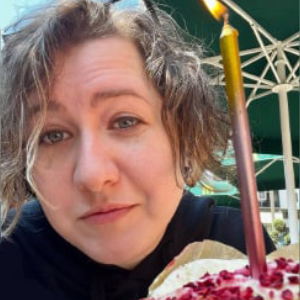How to prioritize meanings on the layout using informational planning
We consider each media as a communication channel, and design - as a set of statements on a single topic. In the process of creating visuals, the question always arises: what is important to communicate in the first place? How to fill in space on the layout taking into account the needs of the visitor, marketer and brand manager? A 3-step algorithm helps to make decisions and avoid mistakes.
The algorithm is based on informational planning. This method comes in handy when we operate within a limited space, for example, we only have a poster, a building facade or a static banner to convey a message. And there are too many of them: the partner needs to sell out salmon pizza by August 15, the marketer needs to attract users to the app; the brand manager wants to say that Dodo “integrates the experience of thousands of visitors who tell us what they like”.
Informational planning allows you to prioritize data, take into account the needs of different stakeholders and the characteristics of the media. To quickly apply this method, we use a 3-step algorithm:
-
Make a list of needs
The project owner puts together the needs of all parties involved: customer experience keepers, partners, marketers and brand managers. Their task is to collect the opinions of the different stakeholders and make a comprehensive list of items that need to be conveyed to customers in the communication.
-
List the needs in order of importance
Doing this, we keep in mind business goals, timing, seasonality, location, and other factors that influence prioritization. For example, a partner decides to take “Tender salmon” pizza off the menu because the unique ingredient became unprofitable to maintain. Now the remaining products need to be used to minimize write-offs. Urgent promotion is a high-priority item.
-
Cutting out the least important
The designer analyzes the characteristics of the media and the context of interaction, and distributes theses across the layout based on priorities.
All media have different information capacity: a sticker on a door or a T-shirt can hold no more than one message, but we can list about 10 items on a table tent. We don't have exact figures; we rely on experience.
In addition to information intensity, we take context into account: we evaluate for how long and where exactly a visitor observes our message. We adapt our layouts for each situation to convey priority points in an appropriate format.
T-shirt lettering
This is Dodo
Window poster
Till August 15 only
Tender Salmon Pizza for 1 ruble
With the first order via the ap
This is Dodo
Tablet tent
Till August 15 only
Tender Salmon pizza for 1 ruble
With the first order via the app
Fresh fish
Alfredo sauce
Cherry tomatoes
Crispy crust
Download the app and give it a go
This is Dodo
Informational planning helps us avoid mistakes and simplifies the systematic implementation of changes. The result is less stress and a design that accurately communicates key messages and solves business problems.
Read next:

